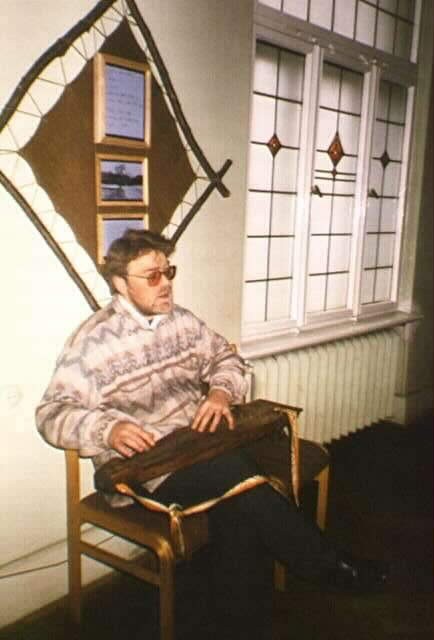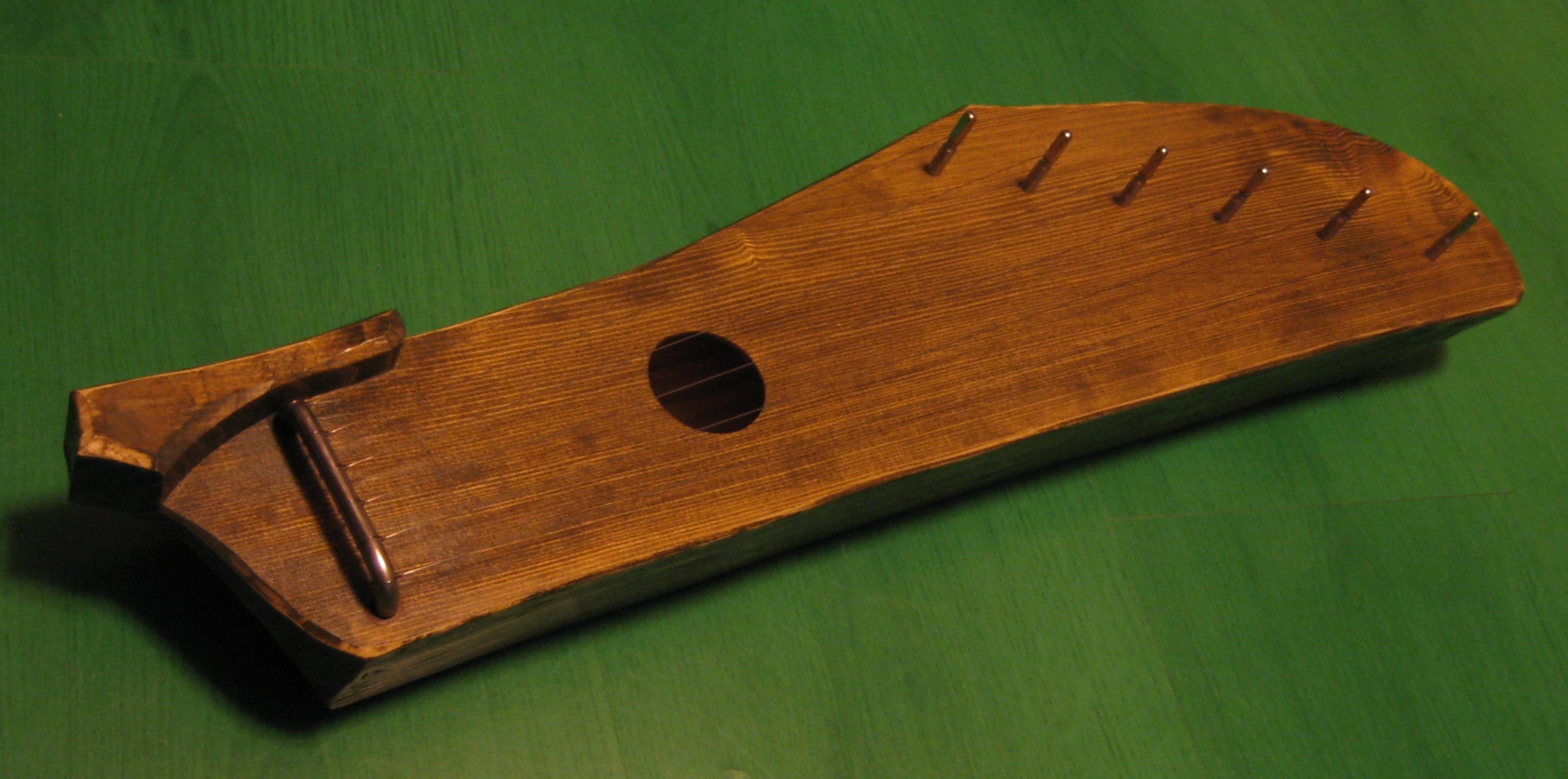|
Kanklės
Kanklės () is a Lithuanians, Lithuanian plucked string instrument (chordophone) belonging to the Baltic region, Baltic box zither family known as the Baltic psaltery, along with the Latvian kokles, Estonian kannel (music), kannel, Finnish kantele, and Russian gusli. Etymology According to Finnish linguist Eino Nieminen, the name of the instrument, along with the names of most of its neighbouring counterparts (Latvian ''kokles'', Finnish ''kantele'', Estonian ''kannel'' and Livonian ''kāndla''), possibly comes from the proto-Baltic form ''*kantlīs''/''*kantlēs'', which originally meant 'the singing tree', most likely deriving from the Proto-Indo-European language, Proto-Indo-European root ''*qan-'' ('to sing, to sound'; cf. Latin "canto, cantus, canticum", Italian "cantare", French "chanter", English "chant, cantor"). A Lithuanian ethnologist Romualdas Apanavičius believes ''Kanklės'' could be derived from the Proto-European root ''*gan(dh)-'', meaning 'a vessel; a haft ... [...More Info...] [...Related Items...] OR: [Wikipedia] [Google] [Baidu] |
Baltic Psaltery
Baltic psaltery is a family of related plucked box zithers, psalteries, historically found in the southeast vicinity of the Baltic Sea and played by the Baltic people, Baltic Finns, Volga Finns and northwestern Russians. Types Baltic psalteries include: * Kanklės (Lithuania) * Kantele (Finland, Karelia and Northwest Russia) * Kannel (Estonia) * Kāndla (Livonian people of Northwest Latvia) * Kokles (Latvia) * Krez (Udmurt people of Central Russia) * Krylovidnye gusli (Northwest Russia) * Kusle (Mari people of Central Russia) * Harpu (Sápmi) The internationally most known instrument of the family is Finnish kantele, so its name is sometimes used in English to also refer to other Baltic psalteries as well. Many of the Baltic psalteries hold a strong symbolic significance in their respective countries, including Finland, Latvia, Lithuania, Estonia and Russia, where playing instruction and instrument makers are available. Etymology According to Finnish linguist Eino Niem ... [...More Info...] [...Related Items...] OR: [Wikipedia] [Google] [Baidu] |
Kokles
Kokle (; ltg, kūkle) or historically kokles (''kūkles'') is a Latvian plucked string instrument (chordophone) belonging to the Baltic box zither family known as the Baltic psaltery along with Lithuanian kanklės, Estonian kannel, Finnish kantele, and Russian krylovidnye gusli. The first possible kokles related archaeological findings in the territory of modern Latvia are from the 13th century, while the first reliable written information about kokles playing comes from the beginning of the 17th century. The first known kokles tune was notated in 1891, but the first kokles recordings into gramophone records and movies were made in 1930s. Both kokles and kokles playing are included in the Latvian Culture Canon. Etymology According to Finnish linguist Eino Nieminen, the name of the instrument, along with the names of most of its neighbouring counterparts (Lithuanian ''kanklės'', Finnish ''kantele'', Estonian ''kannel'' and Livonian ''kāndla''), possibly comes from the p ... [...More Info...] [...Related Items...] OR: [Wikipedia] [Google] [Baidu] |
Kokles
Kokle (; ltg, kūkle) or historically kokles (''kūkles'') is a Latvian plucked string instrument (chordophone) belonging to the Baltic box zither family known as the Baltic psaltery along with Lithuanian kanklės, Estonian kannel, Finnish kantele, and Russian krylovidnye gusli. The first possible kokles related archaeological findings in the territory of modern Latvia are from the 13th century, while the first reliable written information about kokles playing comes from the beginning of the 17th century. The first known kokles tune was notated in 1891, but the first kokles recordings into gramophone records and movies were made in 1930s. Both kokles and kokles playing are included in the Latvian Culture Canon. Etymology According to Finnish linguist Eino Nieminen, the name of the instrument, along with the names of most of its neighbouring counterparts (Lithuanian ''kanklės'', Finnish ''kantele'', Estonian ''kannel'' and Livonian ''kāndla''), possibly comes from the p ... [...More Info...] [...Related Items...] OR: [Wikipedia] [Google] [Baidu] |
Lithuanians
Lithuanians ( lt, lietuviai) are a Baltic ethnic group. They are native to Lithuania, where they number around 2,378,118 people. Another million or two make up the Lithuanian diaspora, largely found in countries such as the United States, United Kingdom, Brazil, Russia, and Canada. Their native language is Lithuanian, one of only two surviving members of the Baltic language family along with Latvian. According to the census conducted in 2021, 84.6% of the population of Lithuania identified themselves as Lithuanians, 6.5% as Poles, 5.0% as Russians, 1.0% as Belarusians, and 1.1% as members of other ethnic groups. Most Lithuanians belong to the Catholic Church, while the Lietuvininkai who lived in the northern part of East Prussia prior to World War II, were mostly Lutherans. History The territory of the Balts, including modern Lithuania, was once inhabited by several Baltic tribal entities ( Aukštaitians, Sudovians, Old Lithuanians, Curonians, Semigallians, Selonians, ... [...More Info...] [...Related Items...] OR: [Wikipedia] [Google] [Baidu] |
Kannel (music)
Kannel () is an Estonian plucked string instrument (chordophone) belonging to the Baltic box zither family known as the Baltic psaltery along with Finnish kantele, Latvian kokles, Lithuanian kanklės, and Russian gusli. The Estonian kannel has a variety of traditional tunings. In Estonia, studying the kannel has made a resurgence after some years of decline. (in Estonian) Etymology According to Finnish linguist Eino Nieminen, the name of the instrument, along with the names of most of its neighbouring counterparts (Finnish ''kantele'', ...[...More Info...] [...Related Items...] OR: [Wikipedia] [Google] [Baidu] |
Plucked String Instrument
Plucked string instruments are a subcategory of string instruments that are played by plucking the strings. Plucking is a way of pulling and releasing the string in such a way as to give it an impulse that causes the string to vibrate. Plucking can be done with either a finger or a plectrum. Most plucked string instruments belong to the lute family (such as guitar, bass guitar, mandolin, banjo, balalaika, sitar, pipa, etc.), which generally consist of a resonating body, and a neck; the strings run along the neck and can be stopped at different pitches. The zither family (including the Qanún/kanun, autoharp, kantele, gusli, kannel, kankles, kokles, koto, guqin, gu zheng and many others) does not have a neck, and the strings are stretched across the soundboard. In the harp family (including the lyre), the strings are perpendicular to the soundboard and do not run across it. The harpsichord does not fit any of these categories but is also a plucked string instrument, as its ... [...More Info...] [...Related Items...] OR: [Wikipedia] [Google] [Baidu] |
Plucked String Instrument
Plucked string instruments are a subcategory of string instruments that are played by plucking the strings. Plucking is a way of pulling and releasing the string in such a way as to give it an impulse that causes the string to vibrate. Plucking can be done with either a finger or a plectrum. Most plucked string instruments belong to the lute family (such as guitar, bass guitar, mandolin, banjo, balalaika, sitar, pipa, etc.), which generally consist of a resonating body, and a neck; the strings run along the neck and can be stopped at different pitches. The zither family (including the Qanún/kanun, autoharp, kantele, gusli, kannel, kankles, kokles, koto, guqin, gu zheng and many others) does not have a neck, and the strings are stretched across the soundboard. In the harp family (including the lyre), the strings are perpendicular to the soundboard and do not run across it. The harpsichord does not fit any of these categories but is also a plucked string instrument, as its ... [...More Info...] [...Related Items...] OR: [Wikipedia] [Google] [Baidu] |
Psaltery
A psaltery ( el, ψαλτήρι) (or sawtry, an archaic form) is a fretboard-less box zither (a simple chordophone) and is considered the archetype of the zither and dulcimer; the harp, virginal, harpsichord and clavichord were also inspired by it. Its resonance box is usually trapezoidal, rectangular or in the form of a "pig's head" and often richly decorated. Etymology The psaltery of Ancient Greece (''epigonion'') was a harp-like stringed instrument. The word ''psaltery'' derives from the Ancient Greek ψαλτήριον (''psaltḗrion''), "stringed instrument, psaltery, harp" and that from the verb ψάλλω (''psállō''), "to touch sharply, to pluck, pull, twitch" and in the case of the strings of musical instruments, "to play a stringed instrument with the fingers, and not with the plectrum." The psaltery was originally made from wood, and relied on natural acoustics for sound production. In the King James Bible "psaltery", and its plural, "psalteries", are used to ... [...More Info...] [...Related Items...] OR: [Wikipedia] [Google] [Baidu] |
Gusli
''Gusli'' ( rus, гусли, p=ˈɡuslʲɪ) is the oldest East Slavic multi-string plucked instrument, belonging to the zither family, due to its strings being parallel to its resonance board. Its roots lie in Veliky Novgorod in Novgorodian Rus'. It may have a connection to the Byzantine form of the Greek kithara, which in turn derived from the ancient lyre, or might have been imported from Western and Central Europe during the Middle Ages, when the zither had immense popularity. It has its relatives in Europe and throughout the world: kantele in Finland, kannel in Estonia, kanklės in Lithuania, kokles in Latvia, Zither in Germany, citera in the Czech Republic, psalterium in France and so on... Furthermore, the kanun has been found in Arabic countries, and the autoharp, in the United States. It is also related to such ancient instruments as Chinese gu zheng, which has a thousand-year history, and its Japanese relative koto. A stringed musical instrument called is listed as ... [...More Info...] [...Related Items...] OR: [Wikipedia] [Google] [Baidu] |
Kannel (instrument)
Kannel () is an Estonian plucked string instrument (chordophone) belonging to the Baltic box zither family known as the Baltic psaltery along with Finnish kantele, Latvian kokles, Lithuanian kanklės, and Russian gusli. The Estonian kannel has a variety of traditional tunings. In Estonia, studying the kannel has made a resurgence after some years of decline. (in Estonian) Etymology According to Finnish linguist Eino Nieminen, the name of the instrument, along with the names of most of its neighbouring counterparts (Finnish ''kantele'', L ...[...More Info...] [...Related Items...] OR: [Wikipedia] [Google] [Baidu] |
Linden Tree
''Tilia'' is a genus of about 30 species of trees or bushes, native throughout most of the temperate Northern Hemisphere. The tree is known as linden for the European species, and basswood for North American species. In Britain and Ireland they are commonly called lime trees, although they are not related to the citrus lime. The genus occurs in Europe and eastern North America, but the greatest species diversity is found in Asia. Under the Cronquist classification system, this genus was placed in the family Tiliaceae, but genetic research summarised by the Angiosperm Phylogeny Group has resulted in the incorporation of this genus, and of most of the previous family, into the Malvaceae. ''Tilia'' species are mostly large, deciduous trees, reaching typically tall, with oblique-cordate (heart-shaped) leaves across. As with elms, the exact number of species is uncertain, as many of the species can hybridise readily, both in the wild and in cultivation. They are hermaphroditic, h ... [...More Info...] [...Related Items...] OR: [Wikipedia] [Google] [Baidu] |
Proto-Indo-European Language
Proto-Indo-European (PIE) is the reconstructed common ancestor of the Indo-European language family. Its proposed features have been derived by linguistic reconstruction from documented Indo-European languages. No direct record of Proto-Indo-European exists. Far more work has gone into reconstructing PIE than any other proto-language, and it is the best understood of all proto-languages of its age. The majority of linguistic work during the 19th century was devoted to the reconstruction of PIE or its daughter languages, and many of the modern techniques of linguistic reconstruction (such as the comparative method) were developed as a result. PIE is hypothesized to have been spoken as a single language from 4500 BC to 2500 BC during the Late Neolithic to Early Bronze Age, though estimates vary by more than a thousand years. According to the prevailing Kurgan hypothesis, the original homeland of the Proto-Indo-Europeans may have been in the Pontic–Caspian steppe of ... [...More Info...] [...Related Items...] OR: [Wikipedia] [Google] [Baidu] |





